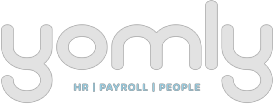Explaining HRIS, HCM, & HRMS: Essential Insights
Navigating through the difference between HRIS, HRMS and HCM systems is a vital aspect of modern business strategy. These acronyms represent the evolution of human resources technology, from basic information storage to comprehensive management and strategic planning tools. They help companies manage their most valuable assets – their employees – more effectively. This article breaks down each system, showcasing their unique features and how they complement each other in a cohesive HR technology strategy.

HRIS (Human Resources Information Systems)
HRIS focuses on the core HR activities, including employee data management, recruitment processes and attendance tracking. It acts as a digital repository for all HR-related information, making data retrieval and management seamless. HRIS is particularly beneficial for automating routine tasks, thus freeing up time for HR professionals to focus on strategic initiatives. It is the cornerstone for organisations looking to maintain comprehensive records and streamline their HR functions.
HCM (Human Capital Management)
HCM offers a broader perspective, encompassing all aspects of workforce management “from hire to retire”. It integrates HRIS functionalities but extends to talent management, including performance analysis, succession planning and learning and development. HCM systems are designed to manage the employee lifecycle comprehensively, facilitating a holistic approach to HR management. They empower organisations to harness the full potential of their workforce, aligning employee performance with corporate goals.
HRMS (Human Resource Management Systems)
HRMS merges the functionalities of HRIS and HCM, often including advanced payroll features. It addresses the entirety of HR tasks, from basic data management to complex talent and performance management. Additionally, HRM software usually integrates payroll software capabilities, ensuring a seamless link between HR operations and payroll processing. This consolidation enables a unified approach to managing human resources, enhancing efficiency and accuracy across HR and payroll functions.
The Synergy Between The Three
While each system has its distinct focus, the synergy between HRIS, HCM and HRMS is undeniable. Organisations often leverage these systems together to create a comprehensive HR and payroll framework. This integrated approach not only streamlines administrative tasks but also facilitates strategic workforce management. By choosing the right combination of systems, businesses can tailor their HR infrastructure to meet their specific needs, fostering an environment of continuous improvement and strategic alignment.
Optimising Your HR and Payroll with Yomly
Selecting the right HR system or payroll software can be a daunting task for any organisation. Yomly’s solutions are designed to offer flexibility, scalability and efficiency, catering to the dynamic needs of modern businesses. By leveraging our expertise, companies can optimise their HR operations, ensuring they are well-equipped to meet the challenges of today’s corporate environment.
Book a product demo today to learn more!
Why do I need HRMS?
HRMS streamlines complex HR tasks, integrating personnel management, payroll, and benefits in one platform. It enhances decision-making through comprehensive analytics, offering insights into workforce dynamics and efficiency. Moreover, HRMS improves regulatory compliance, reducing risks associated with legal obligations and workforce management.
What does HRIS do?
HRIS serves as the digital backbone for HR operations, centralising employee data and automating administrative tasks. It simplifies processes like recruitment, onboarding, and attendance tracking, ensuring accuracy and accessibility of information. Additionally, HRIS supports strategic HR planning by providing data-driven insights into workforce trends and patterns.
What are the main challenges of human capital management?
The primary challenges include aligning HR strategies with overall business objectives, ensuring a skilled and adaptable workforce. Keeping pace with regulatory changes and managing compliance effectively adds another layer of complexity. Furthermore, fostering a positive company culture and employee engagement in a diverse and evolving workplace remains a constant challenge.
